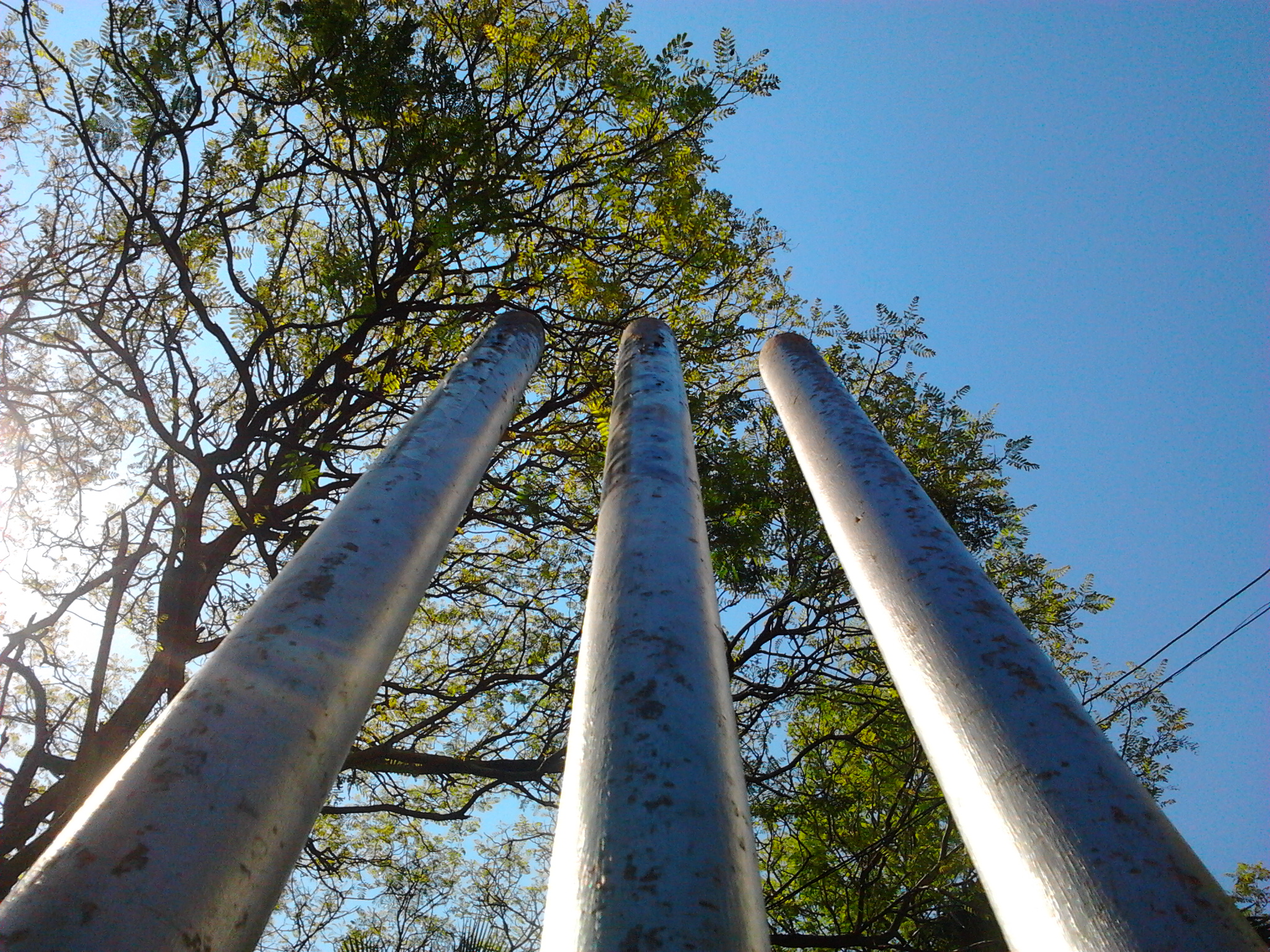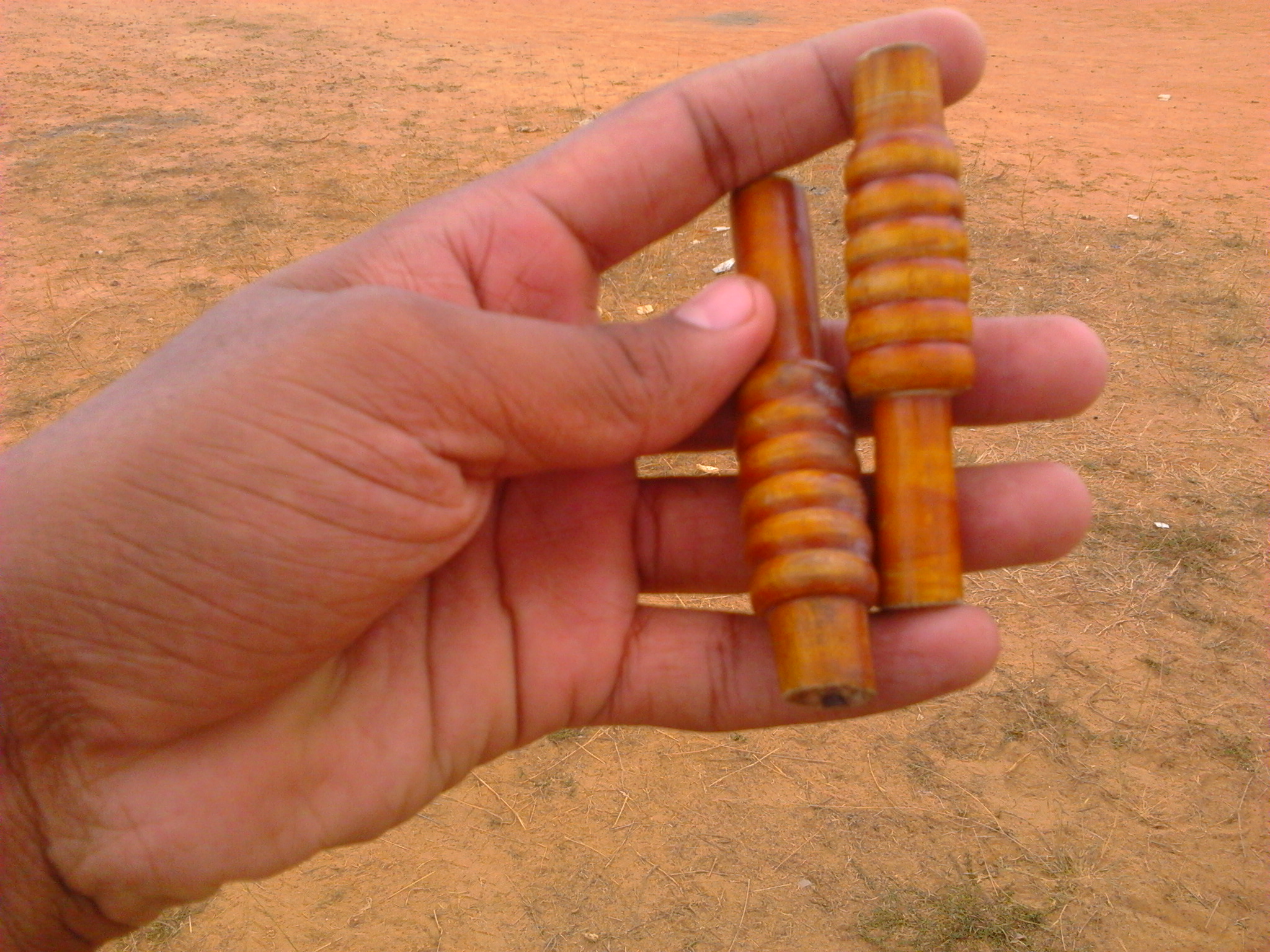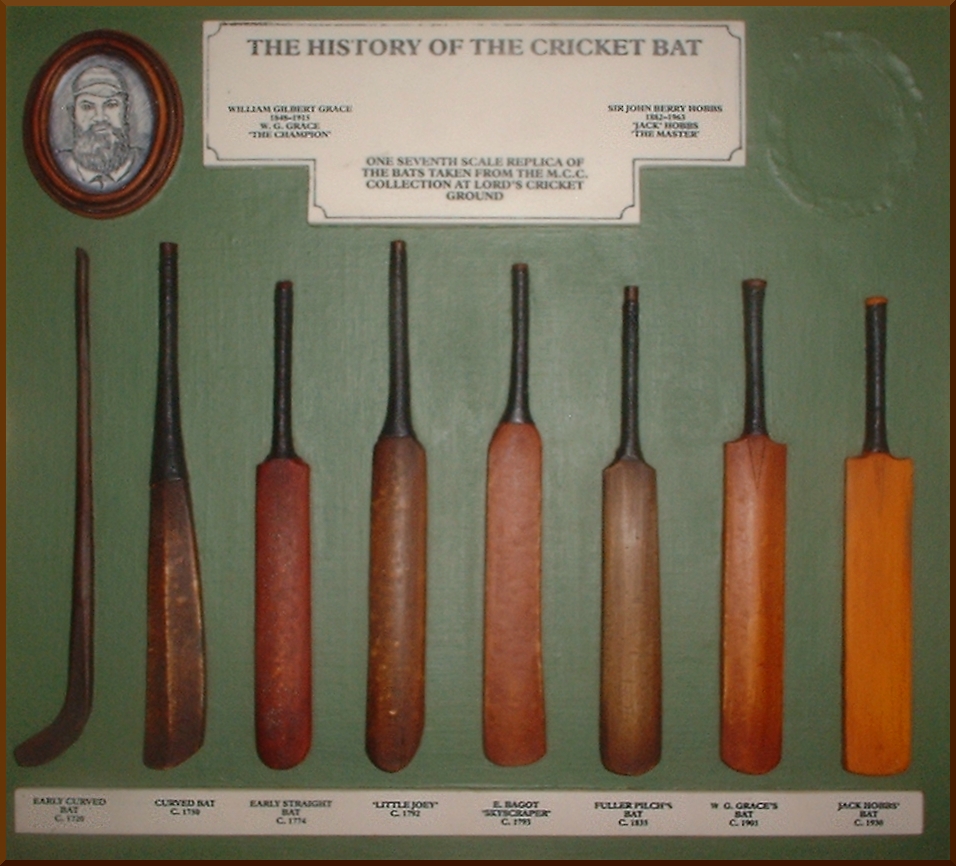|
Stumps
In cricket, the stumps are the three vertical posts that support the bails and form the wicket. '' Stumping'' or ''being stumped'' is a method of dismissing a batsman. The umpire ''calling stumps'' means the play is over for the day. Part of the wicket The stumps are three vertical posts which support two bails. The stumps and bails are usually made of wood, most commonly ash, and together form a wicket at each end of the pitch. The overall width of each wicket is 9 inches (22.9 cm). Each stump is 28 inches (71.1 cm) tall with maximum and minimum diameters of 1 inches (3.81 cm) and 1 inches (3.49 cm). They have a spike at one end for inserting into the ground, and the other end has a U-shaped 'through groove' to provide a resting place for the bails. In junior cricket the items have lesser dimensions. Each stump is referred to by a specific name: * Off stump is the stump on the off side of the wicket (the same side as the batsman's bat). * ... [...More Info...] [...Related Items...] OR: [Wikipedia] [Google] [Baidu] |
Wicket
In the sport of cricket, the term wicket has several meanings: * It is either of the two sets of three Stump (cricket), stumps and two Bail (cricket), bails at each end of the Cricket pitch, pitch. The Fielding (cricket), fielding team's players can hit the wicket with the ball in a number of ways to get a batter out (cricket), out. ** The wicket is guarded by a Batsman (cricket), batter who, with their cricket bat, bat (and sometimes with their pads, but see the laws on Leg before wicket, LBW, leg before wicket), attempts to prevent the Cricket ball, ball from hitting the wicket (if it does, he may be bowled out) and to Run (cricket), score runs where possible. * Through metonymic usage, the Dismissal (cricket), dismissal of a batter is known as the ''taking of a wicket'', * The cricket pitch itself is sometimes referred to as ''the wicket''. History The origin of the word is from wicket gate, a small gate. Originally, cricket wickets had only two stumps and one bail and lo ... [...More Info...] [...Related Items...] OR: [Wikipedia] [Google] [Baidu] |
Hit Wicket
Hit wicket is a method of dismissal in the sport of cricket. This method of dismissal is governed by Law 35 of the Laws of Cricket. The striker is out "hit wicket" if, after the bowler has entered his delivery stride and while the ball is in play, his wicket is put down by his bat or his person. The striker may do this whilst preparing to receive or receiving a delivery or in setting off for his first run after playing the delivery. In simple language, if the striking batsman knocks the bails off the stumps or uproots the stumps, while attempting to hit the ball or take off for a run, he is out hit wicket. This method is the sixth most common method of dismissal after caught, bowled, leg before wicket, run out and stumped. It is significantly rarer than any of these, which constitute the five conventional methods, but still much more common than the other four ( timed out, obstructing the field, retired out and hit the ball twice), which are extremely rare. Although a bowler ... [...More Info...] [...Related Items...] OR: [Wikipedia] [Google] [Baidu] |
Wicket-keeper
In cricket, the wicket-keeper is the Cricket player, player on the fielding (cricket), fielding side who stands behind the wicket, ready to stop Delivery (cricket), deliveries that pass the batsman, and take a Caught, catch, Stumped, stump the batsman out, or run out a batsman when occasion arises. The wicket-keeper is the only member of the fielding side permitted to wear gloves and external leg guards. The role of the keeper is governed by Law 27 and of the ''Laws of Cricket''. Stance Initially, during the bowling of the ball the wicket-keeper crouches in a full squatting position but partly stands up as the ball is received. Australian wicket-keeper Sammy Carter (1878 to 1948) was the first to squat on his haunches rather than bend over from the waist (stooping). Purposes The keeper's major function is to stop deliveries that pass the batsman (in order to prevent run (cricket), runs being scored as 'byes'), but he can also attempt to dismissal (cricket), dismiss the b ... [...More Info...] [...Related Items...] OR: [Wikipedia] [Google] [Baidu] |
Bail (cricket)
In the sport of cricket, a bail is one of the two smaller sticks placed on top of the three stumps to form a wicket. The bails are used to determine when the wicket is ''broken'' or '' put down'', which in turn is one of the critical factors in determining whether a batsman is out bowled, stumped, run out or hit wicket. The wicket is considered to be broken if one or both of the bails fall from the stumps, or a stump is struck out of the ground, by: *the ball, *the striking batsman's bat, or any part of the striker's body or clothing (even if it falls off), or *a fielder with the hand or arm holding the ball. This means, for example, that if the ball hits the wicket directly from the bowler's delivery, the batsman is only out bowled if a bail falls off, so a ball can actually brush or rest against the stumps without the batsman being dismissed (as long as the bail remains in its groove). If a bail falls off the stumps for any other reason while the ball is still in pl ... [...More Info...] [...Related Items...] OR: [Wikipedia] [Google] [Baidu] |
Run Out
Run out is a method of dismissal in cricket, in which the fielding team put down the wicket of a batter who is outside their ground, usually because they are trying to score a run. Run out is governed by Law 38 of the laws of cricket. If the batter is judged run out, the run does not count and the bowler does not get credit for the wicket. A run out can also be effected when the batters are not attempting a run if one of them leaves the crease when the ball is not dead. Some such dismissals cause controversy because they challenge long-established — but not universal — conventions about the spirit of the game. Definition A batter is run out if, at any time while the ball is in play, no part of their bat or person is grounded behind the popping crease and their wicket is fairly broken by the action of a fielder. The batter whose ground is at the end where the wicket is broken is out. A batter can be run out even when not attempting a run if they are out of ... [...More Info...] [...Related Items...] OR: [Wikipedia] [Google] [Baidu] |
Cricket Stumps Without Bails
Cricket is a Bat-and-ball games, bat-and-ball game played between two Sports team, teams of eleven players on a cricket field, field, at the centre of which is a cricket pitch, pitch with a wicket at each end, each comprising two Bail (cricket), bails (small sticks) balanced on three stump (cricket), stumps. Two players from the Batting (cricket), batting team, the striker and nonstriker, stand in front of either wicket holding Cricket bat, bats, while one player from the Fielding (cricket), fielding team, the bowler, Bowling (cricket), bowls the Cricket ball, ball toward the striker's wicket from the opposite end of the pitch. The striker's goal is to hit the bowled ball with the bat and then switch places with the nonstriker, with the batting team scoring one Run (cricket), run for each of these swaps. Runs are also scored when the ball reaches the Boundary (cricket), boundary of the field or when the ball is bowled Illegal delivery (cricket), illegally. The fielding tea ... [...More Info...] [...Related Items...] OR: [Wikipedia] [Google] [Baidu] |
Cricket Laws And Regulations
Cricket is a bat-and-ball game played between two teams of eleven players on a field, at the centre of which is a pitch with a wicket at each end, each comprising two bails (small sticks) balanced on three stumps. Two players from the batting team, the striker and nonstriker, stand in front of either wicket holding bats, while one player from the fielding team, the bowler, bowls the ball toward the striker's wicket from the opposite end of the pitch. The striker's goal is to hit the bowled ball with the bat and then switch places with the nonstriker, with the batting team scoring one run for each of these swaps. Runs are also scored when the ball reaches the boundary of the field or when the ball is bowled illegally. The fielding team aims to prevent runs by dismissing batters (so they are "out"). Dismissal can occur in various ways, including being bowled (when the ball hits the striker's wicket and dislodges the bails), and by the fielding side either catc ... [...More Info...] [...Related Items...] OR: [Wikipedia] [Google] [Baidu] |
Cricket Stumps En
Cricket is a Bat-and-ball games, bat-and-ball game played between two Sports team, teams of eleven players on a cricket field, field, at the centre of which is a cricket pitch, pitch with a wicket at each end, each comprising two Bail (cricket), bails (small sticks) balanced on three stump (cricket), stumps. Two players from the Batting (cricket), batting team, the striker and nonstriker, stand in front of either wicket holding Cricket bat, bats, while one player from the Fielding (cricket), fielding team, the bowler, Bowling (cricket), bowls the Cricket ball, ball toward the striker's wicket from the opposite end of the pitch. The striker's goal is to hit the bowled ball with the bat and then switch places with the nonstriker, with the batting team scoring one Run (cricket), run for each of these swaps. Runs are also scored when the ball reaches the Boundary (cricket), boundary of the field or when the ball is bowled Illegal delivery (cricket), illegally. The fielding tea ... [...More Info...] [...Related Items...] OR: [Wikipedia] [Google] [Baidu] |
Stumped
Stumped is a method of Dismissal (cricket), dismissing a batter (cricket), batter in cricket, in which the wicket-keeper put down the wicket, puts down the wicket of the Glossary_of_cricket_terms#S, striker while the striker is out of their Batter's ground, ground. It is governed by Law 39 of the Laws of Cricket. Being "out of their ground" means no part of the batter's body, equipment or bat is touching the ground behind the popping crease, crease. Stumped is a special case of run out (cricket), run out, but a stumping can only be affected by the wicket-keeper without the intervention of another fielder, when the striker is not attempting a run (cricket), run, and the ball must not be a no-ball. If the criteria for both stumped and run out are met, then the dismissal will be recorded as a stumping and credited to the bowler and wicket-keeper. As always in cricket, one of the fielding team must Appeal (cricket), appeal for the wicket by asking the Umpire (cricket), umpires. It ... [...More Info...] [...Related Items...] OR: [Wikipedia] [Google] [Baidu] |








